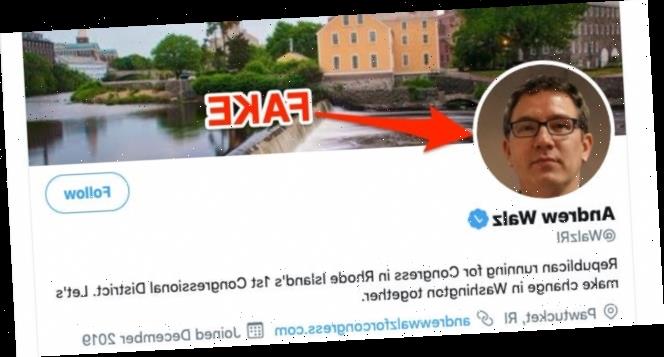- After learning about Russia's interference in the 2016 election in history class, a 17-year-old high school student tried to trick Twitter into verifying a fake 2020 candidate.
- He successfully tricked Twitter into verifying the fake candidate Andrew Walz from Rhode Island.
- Now, his findings are forcing Twitter and partnering nonprofit Ballotpedia to rethink their approach to ensuring election integrity.
- Visit Insider's homepage for more stories.
Never underestimate the power of tech-savvy teenagers with some time on their hands. A 17-year-old high school student from upstate New York tricked Twitter into verifying a fake 2020 candidate, and now, his experiment is forcing the company to re-examine its much-talked-about election integrity measures.
"I want Twitter to succeed," the student said. "I love Twitter. I think it's a great platform and I've learned so much from it," the teen said in an interview with CNN Business, who agreed not to name the teen.
Here's how he brought Andrew Walz, a Republican businessman from Rhode Island, to life.
The idea was inspired by a high school history class.
After learning about Russia's interference in the 2016 election in history class, he became interested in how social media platforms were planning to combat similar threats in 2020.
Apparently, it only took him 20 minutes to create a website for his fictional candidate, and five minutes to make a matching Twitter account. For Walz's profile picture, the student used a website called This Person Does Not Exist, which uses artificial intelligence to generate incredibly realistic human faces. Lastly, the student set up a profile for his fake candidate on Ballotpedia, a nonprofit that functions as "the digital encyclopedia of American politics and elections."
In December, Twitter announced it would be partnering with Ballotpedia to "utilize their expertise in identifying the official campaign Twitter accounts" of all congressional and gubernatorial candidates who qualify for the primary ballot. Since then, Twitter told CNN Business it has verified nearly 1,500 candidates.
According to the student, Twitter and Ballotpedia "never" asked for identification or documentation to confirm that Walz was a legitimate candidate, much less a real person.
Less than a month after Walz's Ballotpedia went live, Twitter reached out to the fake candidate about verifying his account. Their only request? Add a background image on the top of his account, the student said. Only after CNN Business contacted Twitter about the fake account did the company take action and permanently suspend it.
"I had no malicious intent," the student told CNN. "I just wanted to simply test to see whether this could happen. So in case someone with bad intentions wanted to do this, Twitter now knows and can take steps to fix this."
To add insult to injury, dozens of real presidential candidates are still waiting for their Twitter accounts to be verified, per a Tuesday report from The Hill. In a comment shared with CNN on Thursday, a Twitter spokesperson blamed the lag on their "rigorous" identification and verification process in collaboration with Ballotpedia.
"Sometimes, this thorough process can cause a short delay between when candidates qualify for the primary ballot and when candidates are verified," the spokesperson acknowledged.
In response to learning that Walz was not, in fact, a real person or legitimate candidate, editor-in-chief Geoff Pallay admitted to CNN that "Ballotpedia definitely made a mistake here."
"Many candidates generate campaign activities, such as establishing an online presence, far in advance of their states' filing deadlines," Pallay said. "Because of that, we have observed a category of 'declared candidate' versus an 'officially filed candidate.'"
Once per week, Ballotpedia submits lists of candidates to Twitter as part of the platform's verification process. But these lists did not, until recently, denote which candidates are "declared" and which are "officially filed." Going forward, however, Pallay said Ballotpedia will make that distinction clear.
"If I could do this as a high schooler, imagine what a highly trained team of people doing this could do," the student warned.
Source: Read Full Article
